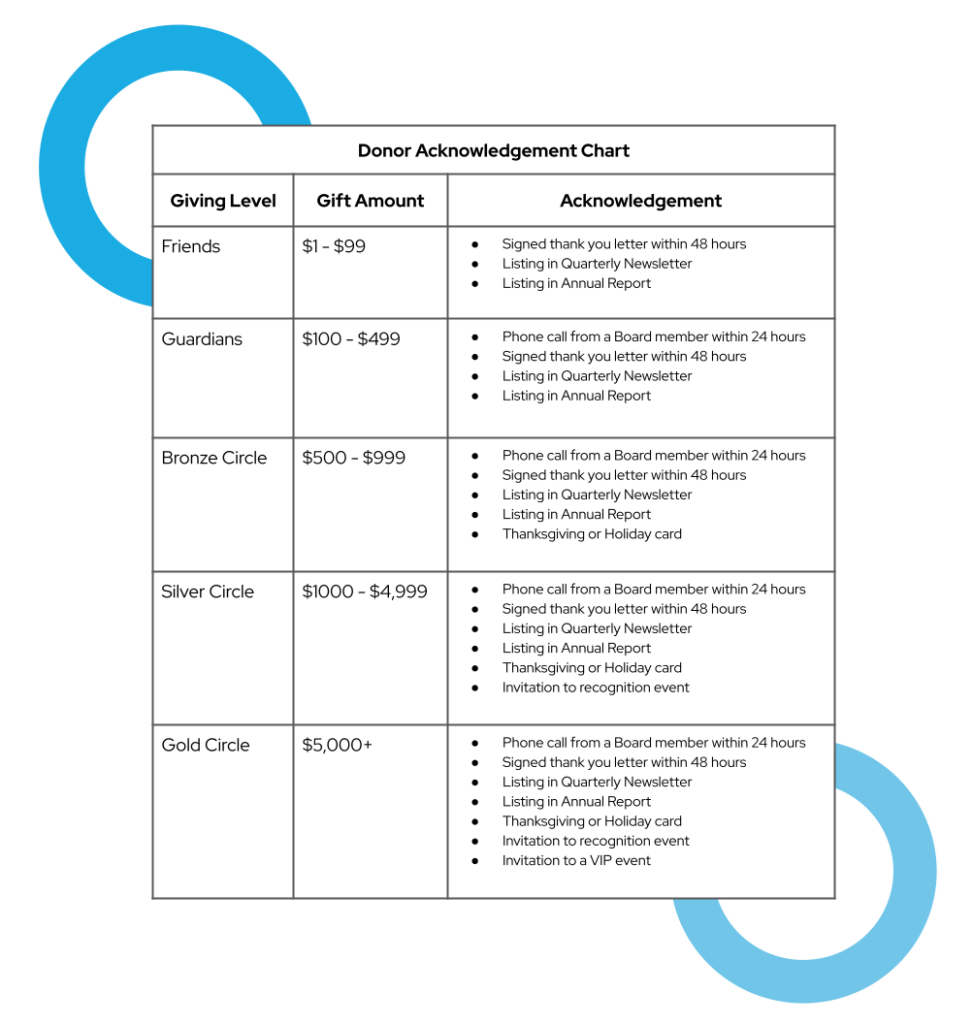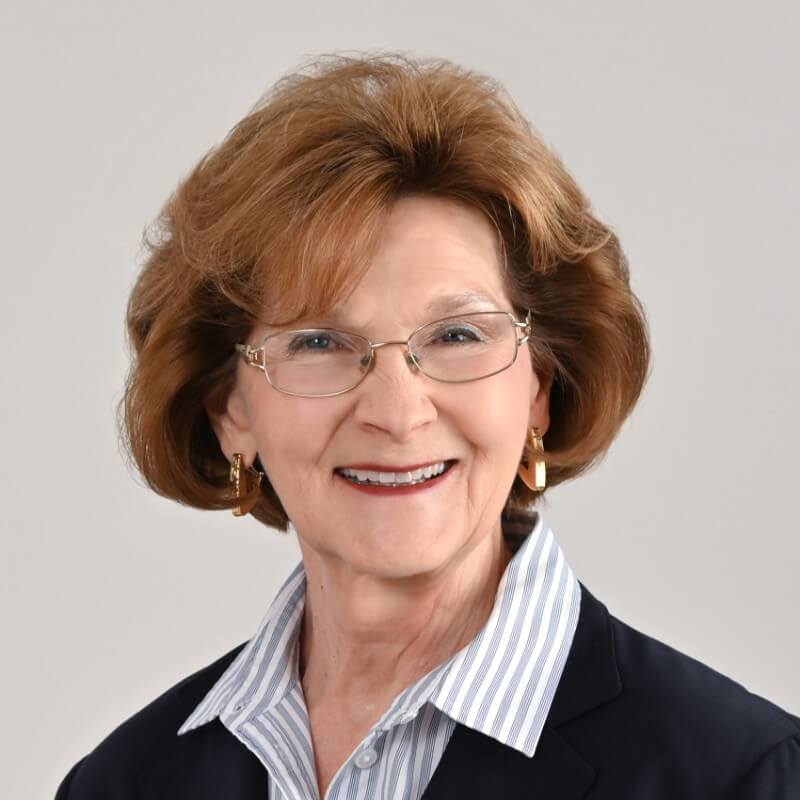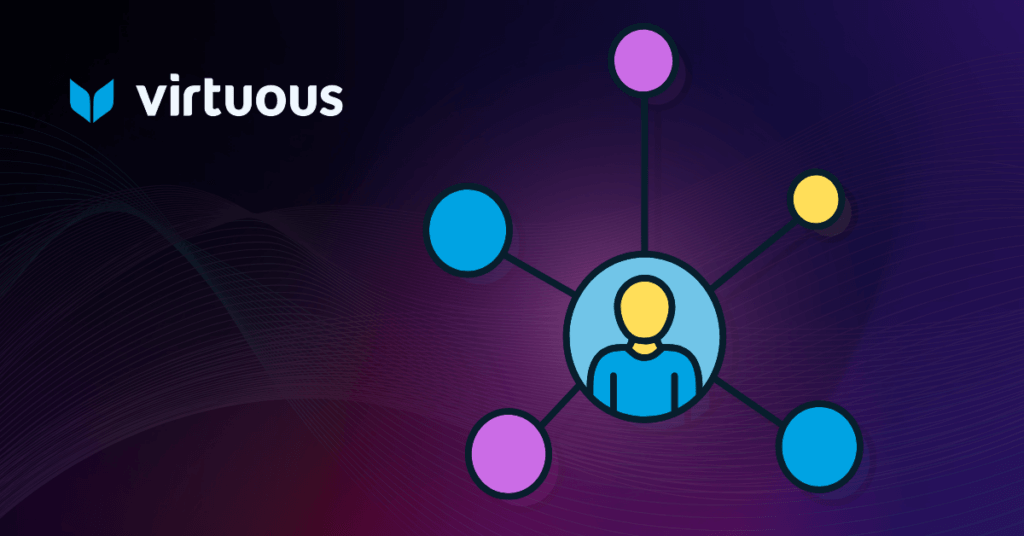You may be familiar with the various documents required to launch a program. These documents include the Case for Support, a Gift Acceptance Policy, and a Donor Recognition Policy. But fundraisers shouldn’t be the only ones intimately familiar with these documents. It’s incredibly important that your board members are involved in the creation and acceptance of these documents. Engaging board members in the development of these documents heightens their understanding of the fundraising process. These three documents are especially important because they demonstrate consistency and transparency in donor management.
But what do each of these documents mean for an organization?
The Case for Support very succinctly explains why an organization is raising money, the critical need, and the community impact. The Gift Acceptance Policy delineates what constitutes an acceptable gift and under what circumstances the organization will accept the donation. Lastly, the Donor Recognition Policy explains how the organization will express gratitude to the donor.
Why a Donor Recognition Policy?
Because the word “recognition” often conjures up ideas of plaques and names on a wall, organizations often shy away from a formal written policy, because they feel that they do not need one. Although plaques and names on a wall can be part of a Donor Recognition Policy, the policy is much more than that. Perhaps a better term would be to call it a Gratitude Policy as it directly relates to saying thank you.
The purpose of the Donor Recognition Policy is to ensure that the individuals, businesses, foundations, and other entities that support the organization through charitable donations or goods and services receive recognition. This recognition should be an expression of gratitude that is appropriate, equitable, and consistent. For example, by having a Donor Recognition Policy, fundraisers know that all $25 donors will receive the same expression of gratitude.
The policy is developed with an attitude that all gifts are important; that nurturing each donor is the business of the organization; and that monetary gifts are never more important than individual relationships. A good Donor Recognition Policy helps nonprofits ensure they are being responsive in the way that they show gratitude to their donors.
Goals of a Donor Recognition Policy
The number one goal of a Donor Recognition Policy is to thank the donor for their donation in a meaningful, timely manner so that the donor feels good about having made the donation and is therefore inclined to make another gift. The policy also has additional goals that include:
- Cultivating relationships with existing donors and encouraging them to reach higher levels of giving
- Attracting new donors
- Ensuring that, in fairness to the organization’s donors, one clearly stated policy of recognition is applied at all times
A donor may request that the organization not publicly recognize their gift, but that doesn’t mean that you don’t need to thank the donor. Thanking donors is the most important form of recognition. Not being thanked for their gift or being thanked improperly might help explain why less than 25% of first-time donors do not make a second gift to an organization. Donor recognition includes every method in a fundraiser’s arsenal to thank a donor. It is a cornerstone of a nonprofit’s stewardship strategies.
Creating an Equitable and Inclusive Policy
Having a policy that guides donor recognition for all types of gifts and all dollar amounts makes donor recognition transparent and equitable. A written policy that donors view as just will solve misunderstandings and hurt feelings. Including board engagement in donor recognition policies increases donor retention and strengthens the board members’ allegiance to the organization. An excellent way to involve board members is to have them call and thank donors. At the same time, the board member can help steward the donor by inviting the donor for a tour of the nonprofit or to a future event.
Example Donor Recognition Policy Chart
The best policy will be very simple and demonstrate for each gift size what the organization does to thank the donor. Following is an example of tasks for each level of giving.

You can also use this example for giving circles, noted by the names for each giving level. Organizations can put their own spin on this example and create a policy that works for the organization and its donors.
An organization might consider providing the same level of thank-you activities to all donors, no matter the size of their donation. Or having different activities for donors based on the length of time they have been donors. There is no right or wrong way to develop a policy. The important point is to create one that is responsive, equitable, and consistently followed.
The chart is part of the donor recognition policy; it is not the donor recognition policy. A complete policy will include recognizing donors who give items such as tangible personal property and real estate. It will also include participation at special events. Other items for consideration in the policy will be how to recognize donor-advised funds and tribute gifts.
Special Considerations in Writing a Donor Recognition Policy
Capital Campaigns & Public Naming
If the organization has an endowment fund or is conducting a capital campaign, the organization will want to create a separate donor recognition policy for each of these. A capital campaign may have naming opportunities. Naming opportunities must be very clearly written to explain all the conditions, including the length of the naming right. Is the naming right forever? What if the donor commits a felony and goes to prison? In recent years, major nonprofit organizations have had to manage issues of significant donors’ involvement in the judicial system. This has always occurred but is much more public today. Because organizations must protect their reputations, naming policies must be built into the Donor Recognition Policy.
Corporations, Foundations, & Other Entities
The organization will need to determine if a separate policy is needed for corporations, foundations, and other significant entities that support the organization. Policies for entities such as corporations can be sections within the overall donor recognition policy. Like individuals, these entities want to be treated with fairness and transparency.
Acknowledgment Vs. Thank You
There is confusion regarding two aspects of donor recognition in regards to saying thank you vs acknowledging the gift. The first concerns donations of $250 or more. The IRS states that in order for the donor to claim a tax deduction they must have documentation verifying the donation was made. Most often this is a written acknowledgment from the qualifying charitable organization. The regulation does not state that only donations of $250 or more need a thank you. This is a misunderstanding of the IRS regulation. ALL donors of any size gifts should receive an appropriate, timely thank you letter.
The second item relates to donors who give online. Most online platforms enable the nonprofit to automatically send a receipt. However, rarely does the receipt that is automatically generated produce the warm fuzzy of a hand-signed thank you letter.
Retaining Donors Through Recognition
Donor retention numbers continue to be in deep decline. Over the past two decades, more than twenty million individuals have stopped making charitable contributions. A majority of these once-upon-a-time donors stated that the organizations did not appreciate their gifts. The organization either did not thank them, or the thank you was insignificant enough that the donors forgot about it. Can nonprofits reach back and recover some of these donors? Would a heartfelt story and a thank you for past gifts make a difference? Can an organization afford to keep losing donors?
Because donor recognition is closely tied to donor retention, the staff and board need to carefully consider developing a Donor Recognition Policy that will resonate with current and future donors. Reviewing this policy every two or three years is important. Not that many years ago, no one considered the impact of donor-advised funds or Bitcoin on charitable giving. Over the past decade, these two forms of giving have grown exponentially and yet are not mentioned in many nonprofit organizations’ donor recognition policies or gift acceptance guidelines.
Summary
If an organization does not have a written Donor Recognition Policy or has not dusted off its existing one in a while, today would be a good day to work on it. Having a Donor Recognition Policy that is adopted and shared with an organization’s stakeholders will increase their level of confidence in the organization, increase generosity, and boost donor retention numbers. Everyone likes to be thanked.




